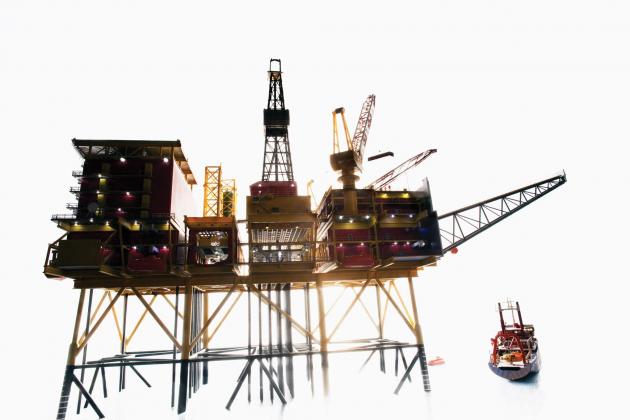
The beginning of the offshore oil industry is commonly dated to the completion of a Kerr-McGee well south of Morgan City in November 1947, but drillers brought in the first well in the Gulf almost a decade before that, in the middle of March 1938.
Humble Oil drilled that well at the end of a pier stretching a mile into the water from McFadden Beach, south of Port Arthur. A railroad spur ran down the middle of the pier and was used to bring men and supplies to the drilling rig at its end.
Those first drillers found a little bit of oil, but not enough to rebuild everything after a hurricane tore up the trestle in August 1938. Even so, the experiment did help solidify two ideas — that there was oil to be found under the Gulf, and that a long pier was not the way to get to it. Piers could be built only so far into the water, and they couldn’t be made sturdy enough or high enough to take on a storm surge.
About the time of the pier-destroying storm, Pure Oil and Superior Oil were working together on the idea of a platform standing alone in the water. They picked a spot with 14 feet of water about a mile south of Cameron, and hired Brown & Root Marine Operators to do the engineering and construction. The oilmen and engineers had a general idea of what needed to be done, but only a general idea. There was a lot of guesswork involved in that first platform.
First, they used pile drivers on barges to pound 300 yellow pine pilings into the sandy seabed. They figured the more pilings the better when storm waves crashed into their platform. But that’s where the biggest guesswork came in. There wasn’t much data in those days on how tall or how strong a hurricane surge could be.
They ended up building a 320-by-180-foot deck 15 feet above the water. The engineers figured that most storm waves would be less than that, but they also built the deck in such a way that it would wash away if a bigger wave hit it. The idea was that it would be simpler to just rebuild the deck rather than fasten it so securely that it would rip out the pilings in a big storm.
Shrimp boats hauled men and supplies to the rig, slowly and at an hourly rate that made it well worthwhile for a shrimper to put aside his nets.
It was all very primitive, but it worked. The first commercially successful well from what became known as the Creole platform was completed on March 18, 1938. A series of directional wells drilled from it produced more than four million barrels of oil over the next 30 years, according to a history of the offshore industry (History of the Offshore Oil and Gas Industry in Southern Louisiana, Minerals Management Service document 2008-042).
World War II put a hold on expansion into the farther Gulf. Besides having to deal with a lack of men and material needed to drill in the Gulf, oilmen were a bit leery of the German submarines that showed up regularly.
But the Creole platform had shown the way, and Kerr-McGee and others were quick to move back onto the water after the war. They were helped by technology created for the war effort and especially by a fleet of sturdy war surplus boats that may have been as important as anything in getting their rigs running.
A collection of Jim Bradshaw’s columns, Cajuns and Other Characters, is now available from Pelican Publishing. You can contact him at jimbradshaw4321@gmail.com or P.O. Box 1121, Washington LA 70589.
